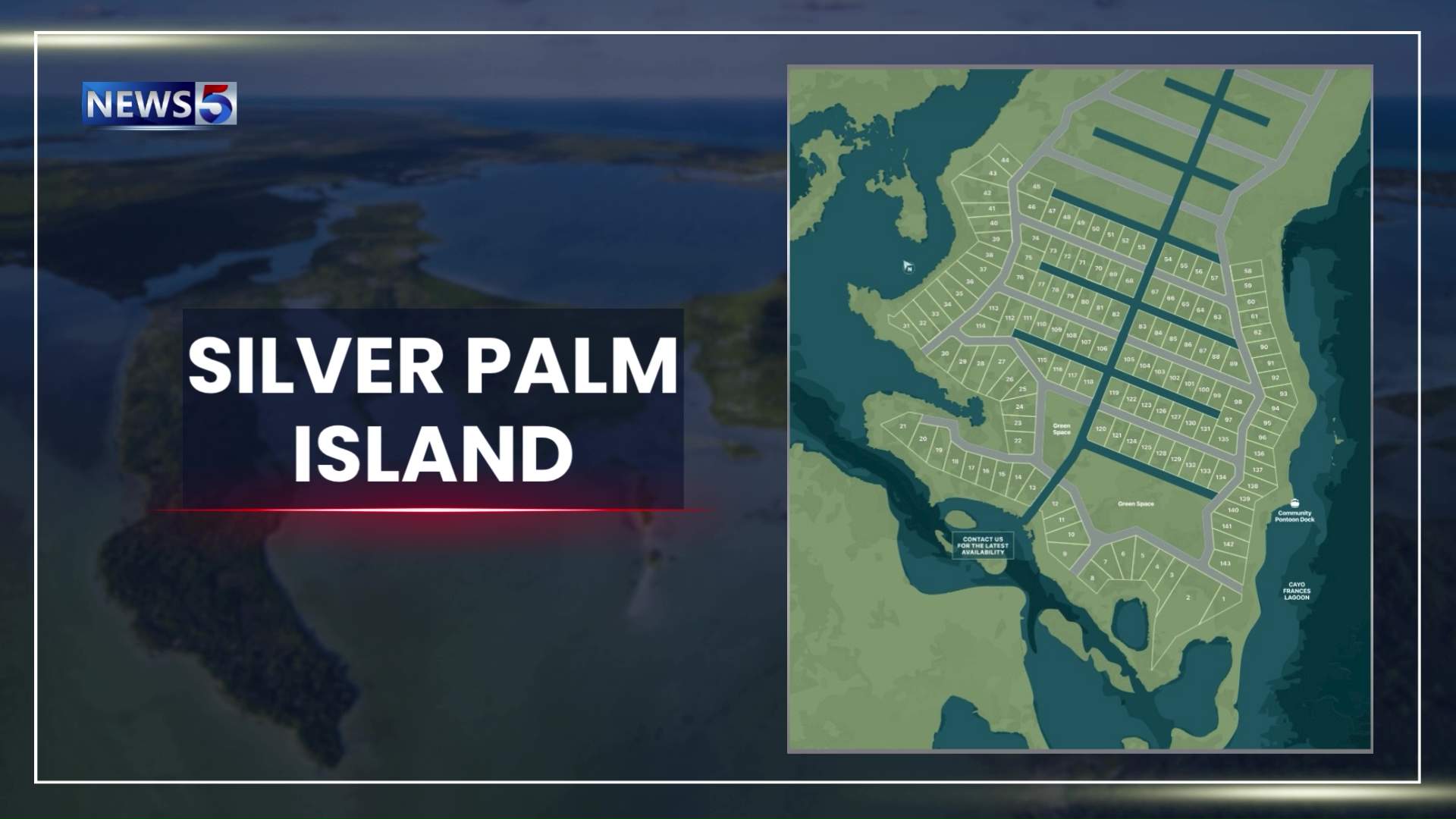The proposed Silver Palms mega development in San Pedro, Belize, has ignited significant controversy due to its potential impact on one of the country’s most ecologically sensitive marine habitats. Approved in late 2024 after a Limited Level Environmental Study, the project bypassed public consultation and a comprehensive Environmental Impact Assessment, raising concerns among environmentalists, local officials, and the community. Andre Perez, Area Representative for Belize Rural South and Minister of the Blue Economy, has voiced strong opposition, emphasizing the area’s critical role in fish spawning and flyfishing. Perez criticized the lack of consultation with key stakeholders, including the Fisheries Department and NGOs like Hol Chan Marine Reserve, and questioned the project’s economic viability. He urged potential investors to reconsider, warning that the fragile ecosystem makes the development unsustainable. The controversy highlights the tension between economic development and environmental preservation in Belize’s coastal regions.
分类: environment
-

Belize’s ‘Never-Ending Sargassum Battle’ Just Got Smarter
Belize’s ongoing struggle with sargassum seaweed has taken a significant turn with the introduction of advanced monitoring tools. This year, the country experienced one of its most severe sargassum crises, with vast amounts of seaweed inundating beaches, disrupting coastal ecosystems, and necessitating continuous cleanup efforts. However, a new initiative funded by the Government of Taiwan, in collaboration with the Central American Commission on Environment and Development, has provided Belize with cutting-edge technology to better manage this environmental challenge. The donation includes a drone, a laptop, and the Sargassum Forecasting Model (SAMtool), which utilizes satellite imagery and ocean current data to track and predict the movement of sargassum mats across the Caribbean. Andre Perez, Belize’s Minister of Blue Economy and Marine Conservation, expressed optimism about the new tools, stating that they will enable a more strategic and efficient response to the sargassum influx. ‘It’s a constant battle, but with this technology, we can approach it in a smarter way,’ Perez remarked. The initiative marks a crucial step forward in Belize’s efforts to mitigate the impact of sargassum on its coastal communities and marine ecosystems.
-

Simons: Bossen moeten eerlijk worden beloond voor hun bijdrage aan het klimaat
Suriname has pledged its support for the establishment of the Tropical Forests Forever Facility (TFFF), a groundbreaking global fund designed to systematically reward nations with extensive forest cover for their contributions to climate preservation. The initiative was unveiled during the Belém Climate Summit, attended by Brazilian President Luiz Inácio Lula da Silva and numerous heads of state and government leaders from forest-rich countries. President Jennifer Simons hailed the TFFF as a long-awaited and essential tool for equitable climate financing. ‘As the country with the highest forest coverage globally, Suriname is delighted to endorse this initiative. The TFFF acknowledges the true value of standing forests and ensures that nations and communities preserving their forests are no longer overlooked,’ she stated. The facility introduces a permanent, predictable, and performance-based mechanism, linking financial support to measurable outcomes in forest conservation. Simons emphasized that the lack of accessible funding for forest protection can no longer persist. ‘The world must finally recognize the invaluable services our forests provide to the global climate.’ The TFFF’s objectives align closely with Suriname’s policies on forest management and sustainable development, which include maintaining at least 90% forest coverage, safeguarding land rights and livelihoods of indigenous and local communities, and promoting a green economy focused on ecotourism, natural cosmetics, and traditional medicine. ‘Fair climate financing enables our nations to improve the lives of our people—not through deforestation, but through sustainable management and conservation of our forests,’ President Simons remarked before her return home.
-
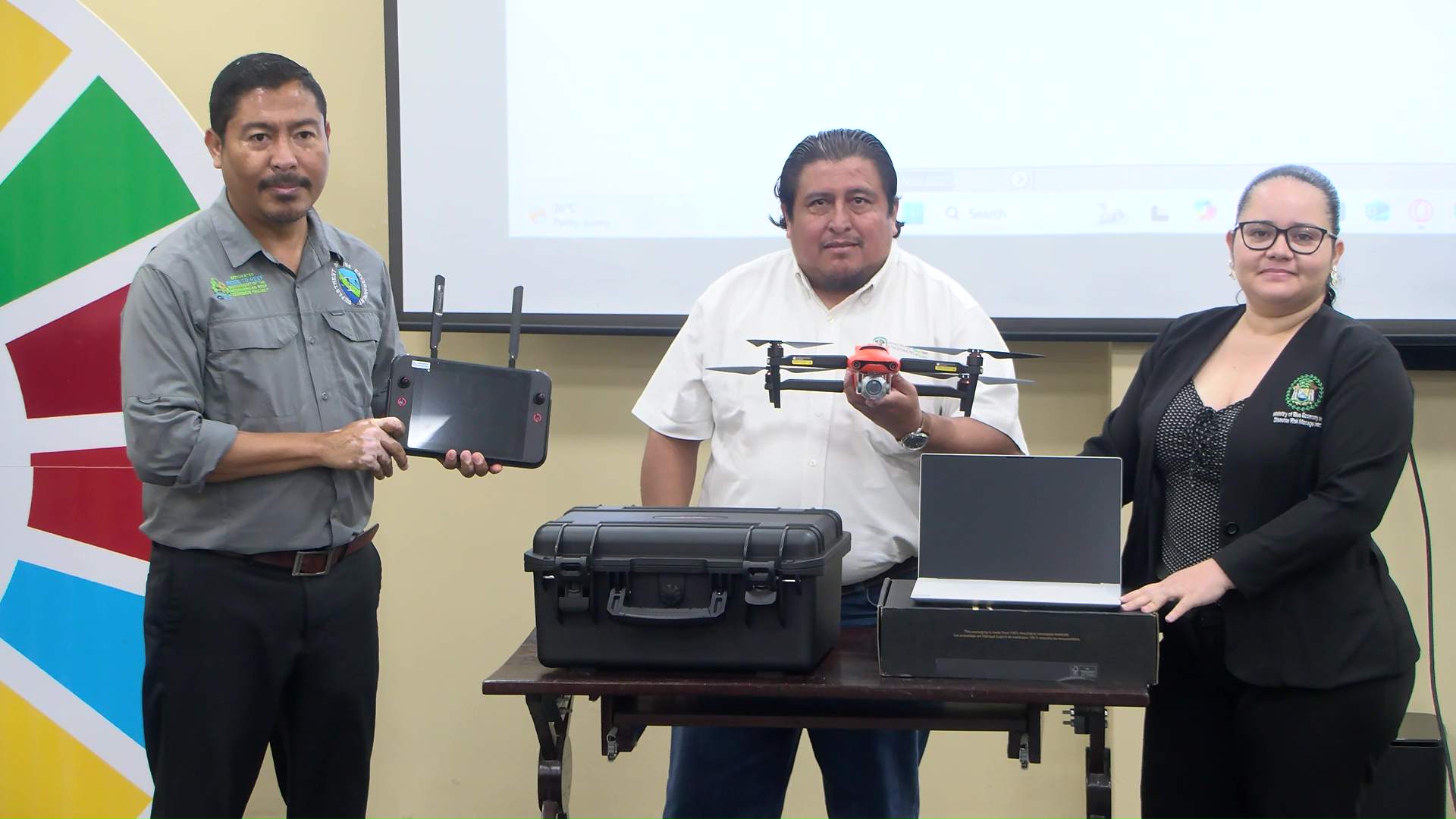
Sargassum Task Force Receives New Monitoring Tools
Belize has taken a significant step forward in addressing its recurring sargassum crisis with the Sargassum Task Force receiving cutting-edge monitoring tools. Earlier this year, the country faced one of its worst sargassum invasions, with tons of rotting seaweed inundating its pristine beaches. The influx disrupted tourism, local livelihoods, and marine ecosystems, prompting urgent action. Today, the Task Force unveiled a suite of advanced tools, including a drone, a laptop, and the Sargassum Forecasting Model (SAMtool), donated by the Department of the Environment. These tools are part of a broader regional initiative funded by the government of Taiwan, aimed at enhancing Belize’s ability to predict and manage sargassum outbreaks. Deputy Chief Environmental Officer Edgar Ek highlighted the collaborative efforts behind the project, involving the Ministry of Tourism and the Ministry of Blue Economy and Marine Conservation. SAMtool, a subscription-based digital platform, utilizes satellite imagery and ocean current forecasts to track sargassum movement, providing critical data on its trajectory and potential impact. Chief Meteorologist Ronald Gordon emphasized the tool’s role in strengthening national preparedness and response strategies. Tourism Officer Darcy Correa underscored the crisis’s broader implications, noting that sargassum not only affects tourism but also the livelihoods of coastal communities. With these new tools, Belize aims to improve early warning systems, support informed decision-making, and safeguard its coastal ecosystems and economy.
-
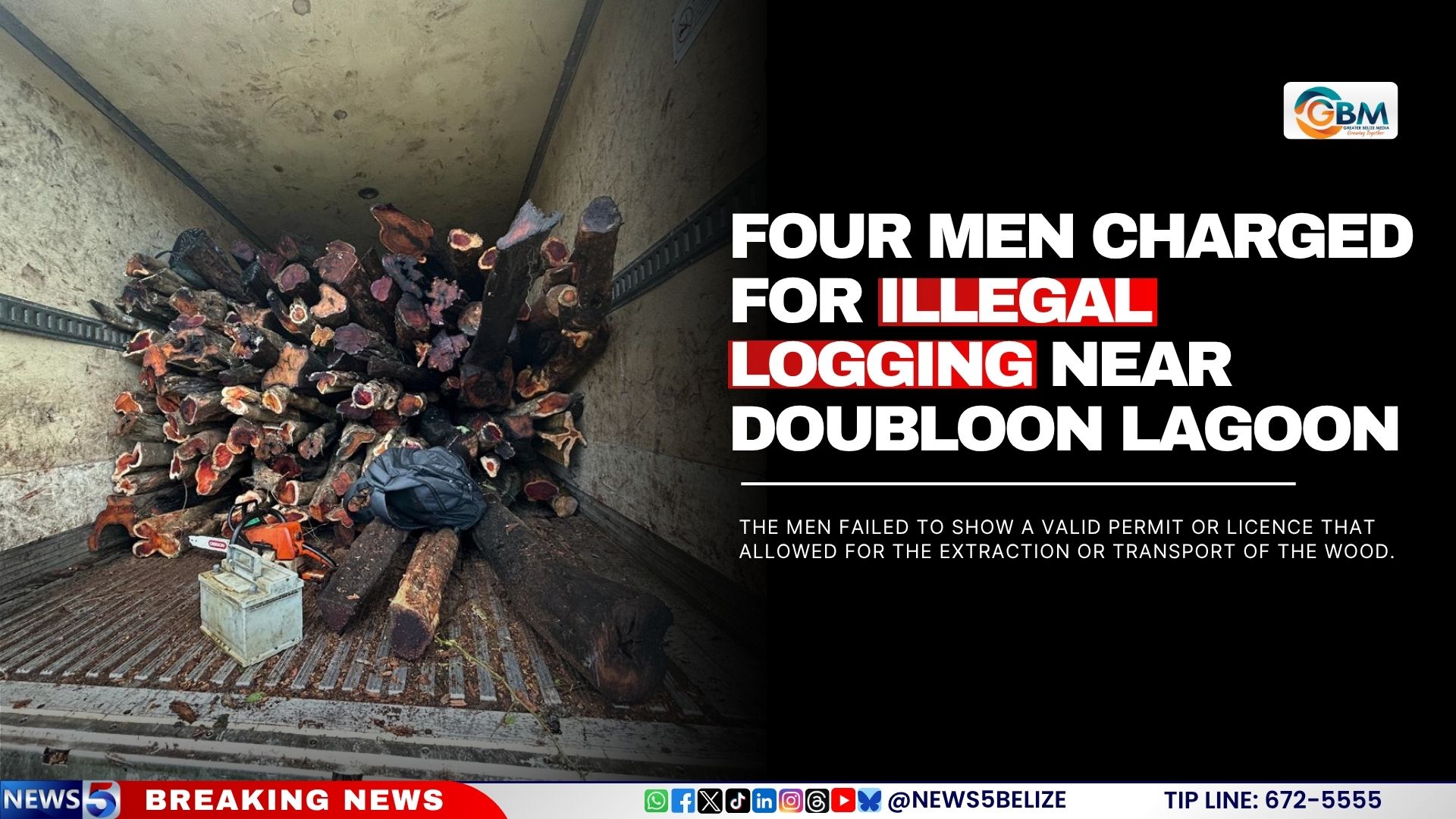
Four Men Charged for Illegal Logging near Doubloon Lagoon
In a significant crackdown on environmental violations, four individuals have been formally charged with illegal logging activities near Doubloon Lagoon in the Orange Walk District. The incident, which unfolded on November 5, 2025, was brought to light by the Corozal Sustainable Future Initiative (CSFI) enforcement team. The team intercepted the group as they were unloading logwood posts from a red tractor into a white GMC truck. Notably, the men were unable to produce any valid permits or licenses authorizing the extraction or transportation of the wood.
Authorities swiftly seized the vehicles involved, along with a chainsaw, a tractor battery, and approximately 100 logwood posts as evidence. The accused, identified as Martin Rosado, Diego Santos, Chad Vargas, and Aldair Correa, have been charged under Section 19 of the Forest Act for the unlawful possession of forest produce.
This case follows closely on the heels of another illegal logging incident reported on November 2, 2025, where rangers from the Wildlife Conservation Society detained four individuals from Cotton Tree Village. The Forest Department has issued a stern reminder to the public about the legal ramifications of unauthorized logging. ‘Harvesting, transporting, or possessing forest produce without the necessary permits is a criminal offence,’ the department stated, urging citizens to report any suspicious activities to safeguard Belize’s precious forests.
-

Belize at Center of the Blue Economy Exchange
Belize has emerged as a key player in the global effort to balance economic growth with marine conservation through the Blue Economy. Partnering with the African Union and the Global Water Partnership, Belize is hosting a groundbreaking knowledge exchange aimed at fostering sustainable ocean development. This initiative, supported by the Global Environment Facility (GEF), focuses on practical solutions such as sustainable fisheries, marine spatial planning, and innovative financing mechanisms. Two major projects—the African Small Island Developing States (SIDS) Blue Economy Project and PROCARIBE+—are driving this collaboration. The exchange aims to share best practices and develop policies that ensure the Blue Economy benefits both people and the planet. Carlie Gillett, Project Officer for the Blue Economy, emphasized the importance of mutual learning between projects to advance sustainable fisheries and marine planning. Sonia Gautreau of the UNDP highlighted the role of the International Waters Learning Exchange and Resources Network (IW Learn) in facilitating global collaboration. For African SIDS, the priority is establishing robust policies and frameworks to scale the Blue Economy across the continent. Shamiso Kumbrai, representing the African SIDS Project, noted the significance of on-the-ground implementation, which Belize exemplifies. Samir Rosado of the Coastal Zone Management Authority and Institute (CZMAI) underscored Belize’s vision of a healthy, resilient ocean that supports both economic prosperity and cultural well-being. The knowledge exchange, set to conclude later this week, promises to influence ocean policy and sustainable development strategies worldwide.
-

Fuel Spill in Placencia Clears, Source Still Unknown
The fuel spill that caused alarm among Placencia residents over the weekend has now dissipated, according to the local fire department. However, the source of the spill remains unidentified, raising concerns about the potential for future incidents. Initial tests conducted by the Department of Environment (DOE) confirmed that the substance was gasoline, which spreads rapidly and evaporates more quickly than heavier fuels like oil. Officials estimate that the spill affected approximately 0.3 acres of water in the Placencia Channel. Residents first noticed a strong gasoline odor and a rainbow-like sheen on the water late Saturday evening. Many initially suspected a nearby gas station, but thorough inspections of its pipelines, dispensers, sumps, and tanks revealed no leaks. The DOE indicated that the gas station is located slightly south of the affected area and that the contamination likely originated from another source. Local residents have suggested other possible culprits, including an old crane stationed nearby and a sailboat that reportedly sank two to three months ago. Additionally, there is a boatyard in the vicinity, though officials confirmed no incidents occurred there. The DOE emphasized the need for further investigation to prevent future occurrences. While the immediate environmental threat has subsided, the search for answers continues.
-
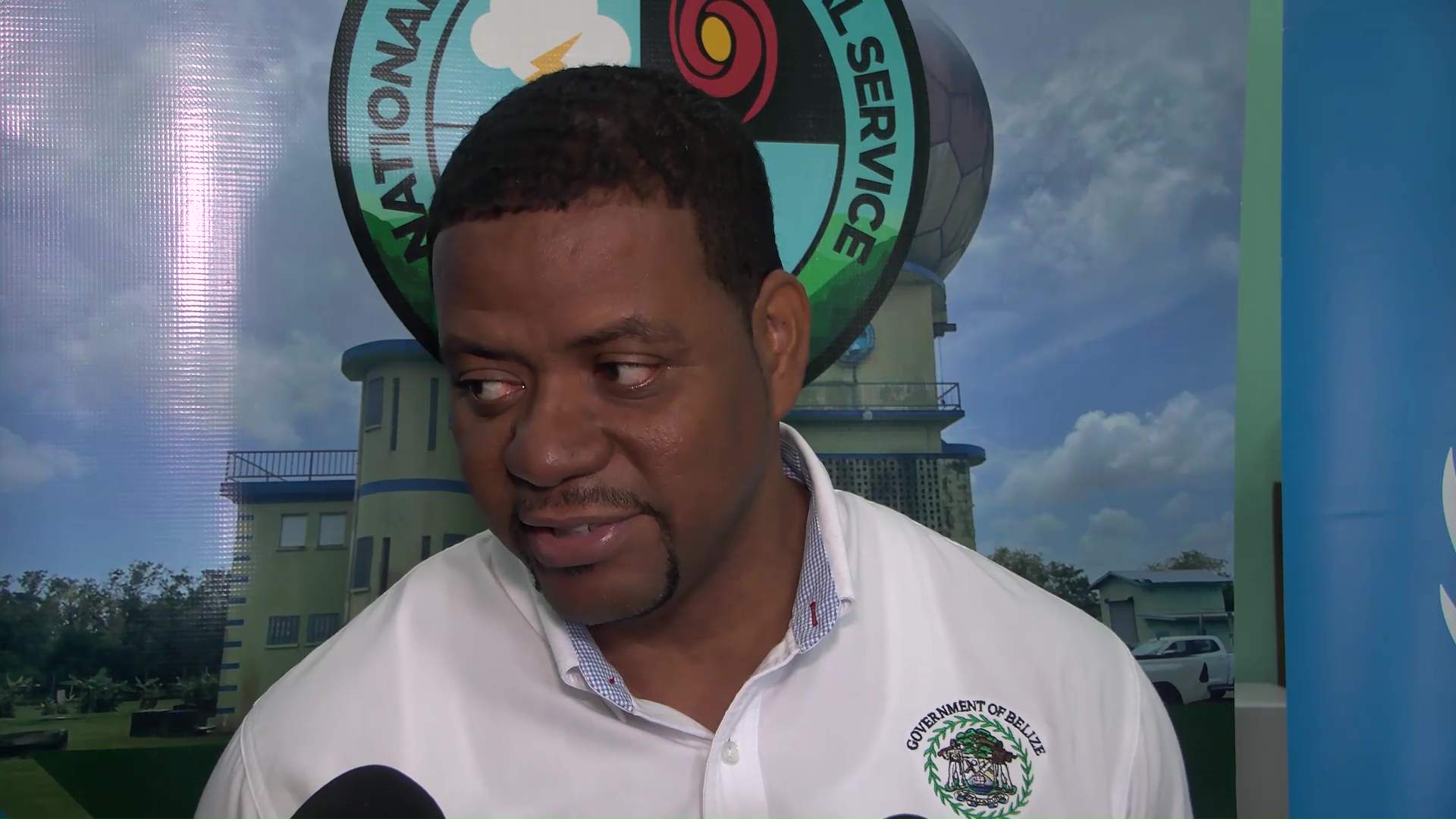
Chief Meteorologist Urges Vigilance Despite Calm Forecast
As November progresses, many Belizeans are questioning whether the threat of hurricanes has finally subsided. Chief Meteorologist Ronald Gordon, however, emphasizes that vigilance remains crucial. While the recent passage of the first cold front last week is a positive indicator, Gordon reminds the public that the official hurricane season extends until November 30th, with the potential for storms forming even beyond that date. Currently, the weather outlook is calm, but Gordon stresses the importance of staying prepared. Reflecting on the possibility of a catastrophic storm like Hurricane Melissa impacting Belize, Gordon acknowledges the country’s vulnerability. Historically, Belize has endured severe hurricanes, with major storms recurring every 20 to 30 years. The last significant event was Hurricane Dean in 2007, which, although not making direct landfall, still affected the northern regions. Gordon’s message is clear: while the immediate forecast is reassuring, complacency is not an option in a region prone to such natural disasters.
-

$60K Boost for Early Warning Systems After Hurricane Melissa’s Devastation
In the wake of Hurricane Melissa’s catastrophic impact on the Caribbean, Belize is taking significant steps to bolster its early warning systems. The National Meteorological Service of Belize has received a $60,000 donation of advanced equipment from the Korea International Cooperation Agency (KOICA), aimed at enhancing the country’s disaster preparedness and response capabilities. This initiative is part of a broader project that began in July 2024 and is set to continue through December 2026, with additional funding from the United Nations Development Programme (UNDP) and the World Food Program. The donated equipment includes computers and communication tools that will be used to generate graphics, produce short forecasts, and collect critical climate data. Ronald Gordon, Chief Met Officer, emphasized the dual focus of the project: improving early warning capabilities to provide actionable information on approaching hazards and collecting long-term climate data to inform future planning and development. Minister of Public Service, Henry Charles Usher, highlighted the importance of training and capacity building for the National Met Service staff and disaster risk management teams across the country. This donation is a key component of the United Nations’ ‘Early Warnings for All’ initiative, which aims to protect everyone on Earth from hazardous weather, water, or climate events by the end of 2027.
-
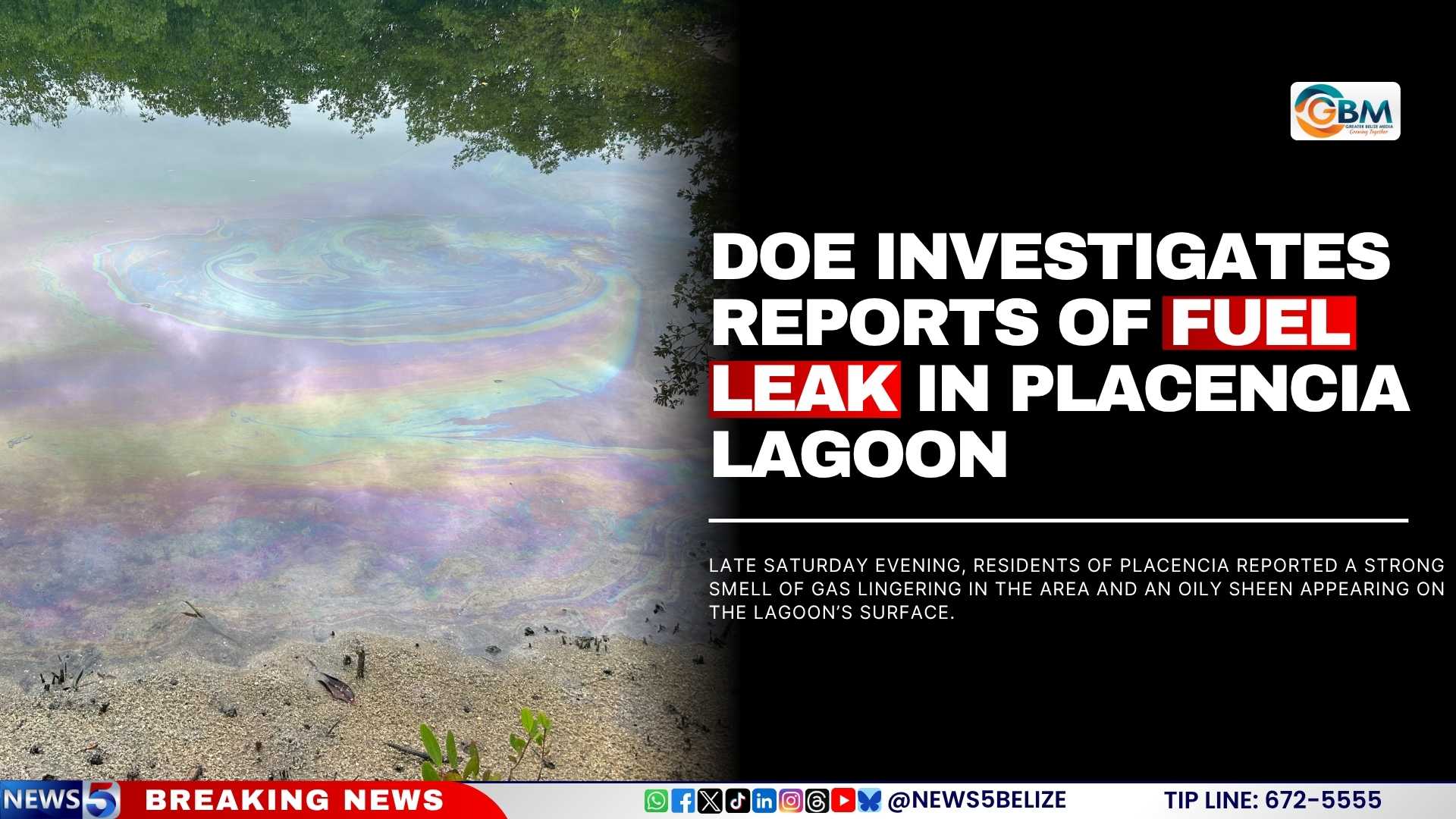
DOE Investigates Reports of Fuel Leak in Placencia Lagoon
The Department of Environment (DOE) has launched a comprehensive investigation into reports of a fuel odor and a multicolored sheen observed in the Placencia Lagoon. The incident came to light late Saturday evening when local residents reported a strong gasoline smell and an oily film on the water’s surface. Concerned about a potential fuel leak, residents alerted authorities, pointing to a nearby gas station as a possible source. One resident described the situation as alarming, stating, ‘The smell of gasoline was overwhelming and persisted through the night, contaminating our lagoon.’
While the gas station in question conducted an internal review and found no discrepancies between fuel received and sold, the DOE has initiated a full inspection to ensure no leaks are overlooked. Preliminary findings from the DOE suggest that the sheen on the water indicates the presence of refined fuel, characterized by high evaporation rates and low viscosity. Officials are currently examining underground sumps and pressurizing fuel lines to rule out pipeline leaks. ‘No leaks have been detected so far,’ the DOE confirmed, but additional checks in surrounding areas are underway to identify any alternative sources of contamination.
